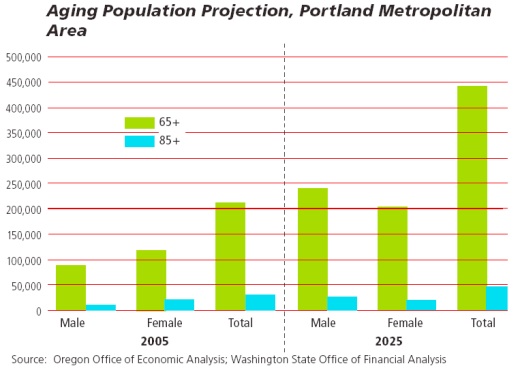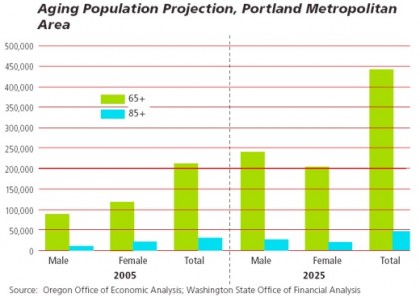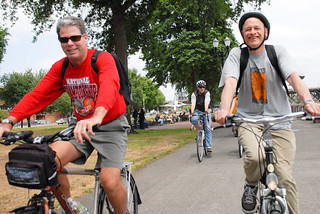A new study, Improving the visibility of bicycle infrastructure, by researchers at the University of Gronigen (in the Netherlands) shows that roads built with poorly visible markings and obstacles on infrastructure where people ride bikes contributes to crashes and that older people and those with visual impairments are especially at risk.
Dutch Mobility reported on the study in their latest issue:
The researchers Eva Fabriek and Dick de Waard state that the visual characteristics of road design play an important role in preventing accidents by cyclists with visual handicaps…The questionnaires revealed that 45% of respondents had at one time or other fallen or ridden against an obstacle – usually the kerb or a bollard.
As part of the study, researchers outfitted subjects with special goggles that “decreased contrast sensitivity” and found that the “cyclists’ feelings of safety… worsened” as visibility decreased. “This finding,” says the researchers, “supports the stance that the visual characteristics of bicycle infrastructure are an important factor in single-bicycle crashes.”
[Interestingly, in the Netherlands, 38% of all fatal bike crashes (about 50 per year on average) in 2005 were single-vehicle crashes and “visibility of bicycle infrastructure and obstacles were considered to be the main contributing factor.]
The researchers shared some advice for planners: primarily that the number of obstacles in the infrastructure should be minimized. They also have specific advice that if bollards are necessary, “the standard [in Gronigen] red-white bollard is the best choice” and that curbs should be painted white. In addition, they recommend that roadway shoulders where people bike should have “bright pavements or high-contrast road markings.”
This research reminded me of the study of bike commuters done back in 2010 at Oregon Health & Science University (OHSU). The results of that study found that about 20% of bicycle commuters experienced an injury while biking over the course of a year and that, “injury prevention should focus on improving the safety of the bicycle commuting environment.”

This new research from Gronigen seems important given that over 20% of Americans are expected to be over 65 years old by 2050. In the Portland region, our over-65 population is expected to double by 2025. In that same time period, we are likely to see major improvements to our bike network and large increases in the number of Portlanders who bike on a daily basis.
In the Netherlands, the study says, people 75 years and older are at a 12 times higher risk of dying in a bike crash than an average person. “Despite the relatively large road safety risks,” state the researchers, “it is essential that older people are able to continue to use their bicycles. Cycling improves their health, their quality of life, and reduces the risk of heart disease… Not being able to cycle anymore would mean reduced mobility and a loss of independence and would impact mental well-being.”
We wouldn’t want that to happen now would we?
— You can download the study as a PDF here.


